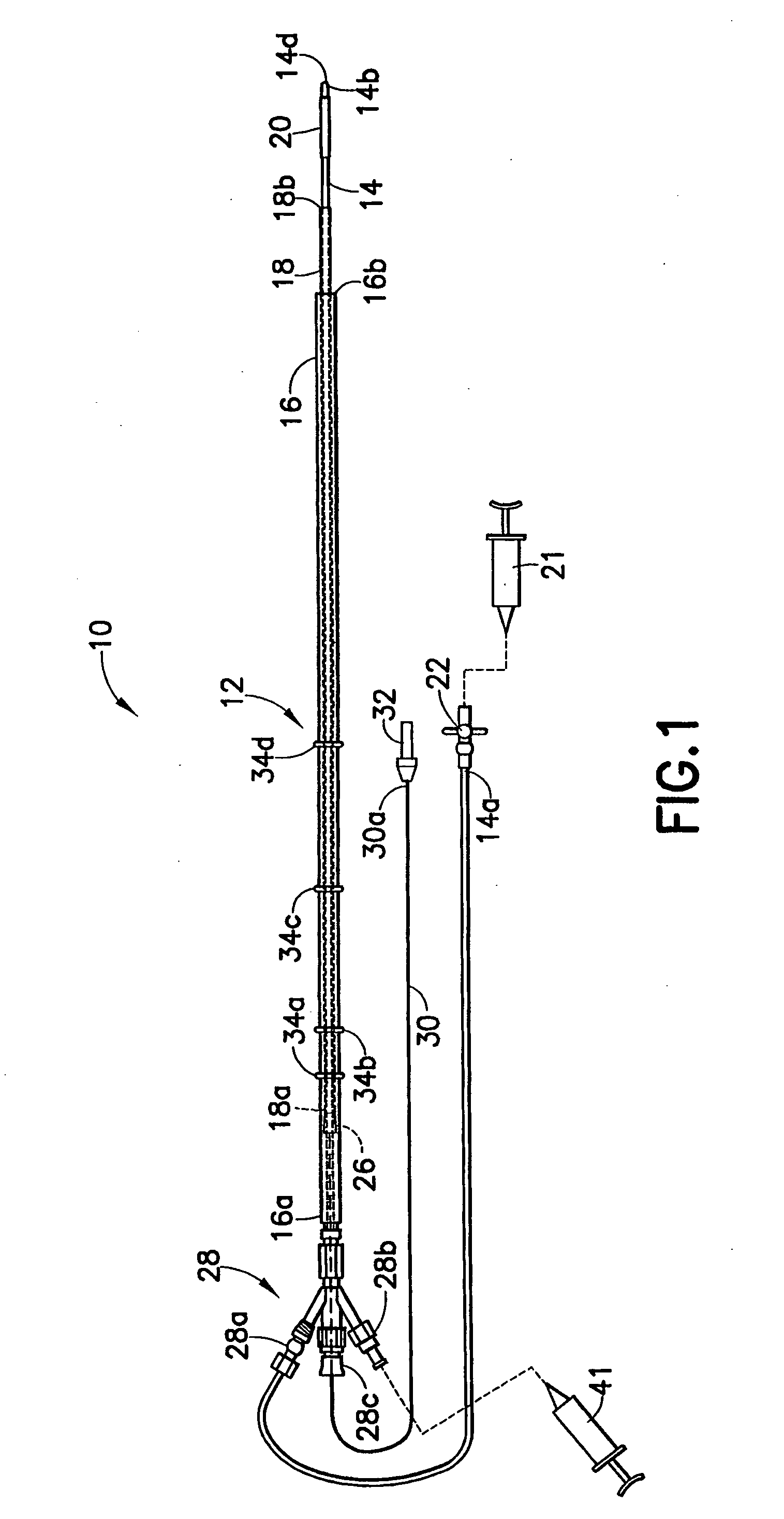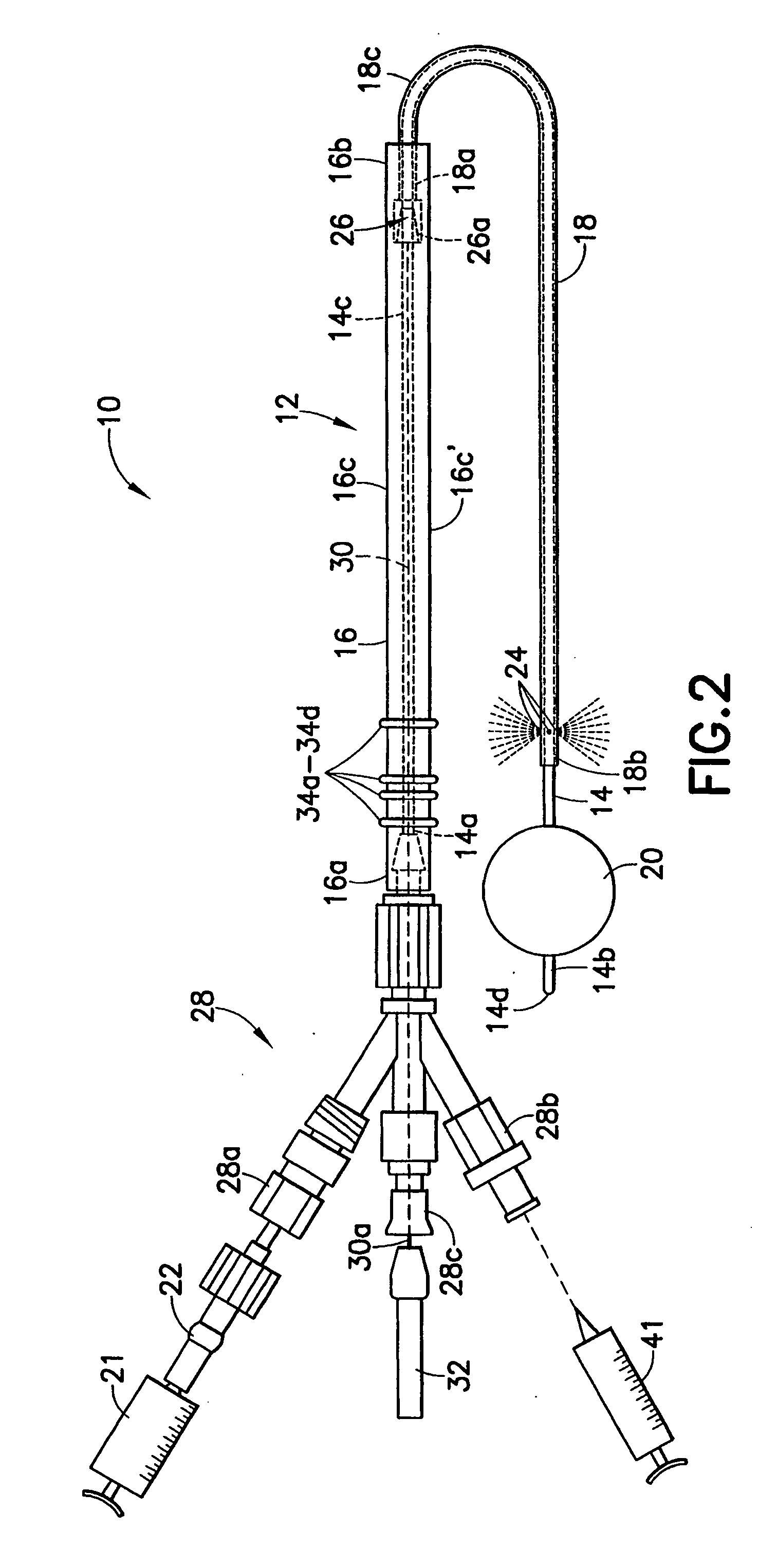Occludable intravascular catheter for drug delivery and method of using the same
a technology of intravascular catheter and drug delivery, which is applied in the direction of balloon catheter, multi-lumen catheter, surgery, etc., can solve the problems of vein dilation, pain and ulceration, inability to close, etc., and achieve the effect of stiffness and maneuverability
- Summary
- Abstract
- Description
- Claims
- Application Information
AI Technical Summary
Benefits of technology
Problems solved by technology
Method used
Image
Examples
second embodiment
[0195]FIG. 32 illustrates a weeping catheter system. This arrangement is similar to the arrangement shown in FIG. 31 but for the addition of an annular baffle 908 between the catheter 800 and the catheter 900. The baffle prevents release of treating fluid through the perforations 906 until the fluid has first reached the distal end of the catheter system and then is redirected proximally in an annular space defined by the baffle 1008 and the weeping catheter 900.
third embodiment
[0196]FIG. 33 illustrates a portion of a weeping catheter 1000. The catheter has three lumena 1002, 1004, and 106. The lumena 1002 and 1004 are larger than the lumen 1006 and are separated by a wall 103. The ends of the lumena 1002 and 1004 are closed at 1008, but wall 1003 is stopped proximal of wall 1008 such that a fluid passage 1010 is formed to couple distal portions of the lumena 1002 and 1004. A plurality of perforations 1012 are provided along the length of the catheter 1000 in fluid communication with the lumen 1004. The proximal portion 105 of the lumen 104 is sealed. As shown in FIG. 33, a tubular extension 1014 is provided at the distal end of the catheter. This extension 1014 is in fluid communication with the lumen 1006 and is used to inflate a balloon not shown in this Figure. From the foregoing, those skilled in the art will appreciate that treating fluid delivered through lumen 1002 will travel to the end of the catheter and pass through the passage 1010 into the lu...
PUM
 Login to View More
Login to View More Abstract
Description
Claims
Application Information
 Login to View More
Login to View More - R&D
- Intellectual Property
- Life Sciences
- Materials
- Tech Scout
- Unparalleled Data Quality
- Higher Quality Content
- 60% Fewer Hallucinations
Browse by: Latest US Patents, China's latest patents, Technical Efficacy Thesaurus, Application Domain, Technology Topic, Popular Technical Reports.
© 2025 PatSnap. All rights reserved.Legal|Privacy policy|Modern Slavery Act Transparency Statement|Sitemap|About US| Contact US: help@patsnap.com



